Suffolk in England is a peaceful part of a peaceful country. But if you know where to look, between its pretty villages, sandy beaches and open countryside there are many traces of war and violence. Often full of paddling children, the sea eats towns. From an historical perspective, whether they are French, Spanish, German, Dutch or Russian, England’s enemies are usually to its east, putting Suffolk on the front line.

The most obvious traces of war in Suffolk are from the Second World War. When Britain “stood alone” from 1939 to 1941 there was a very real threat of invasion from Nazi-occupied Europe. Concrete fortifications such as the pillbox above are common across Britain, but the ones in Suffolk look across the North Sea, where dim shapes in the dawn mist could plausibly have arranged themselves into the terrifying outline of an invasion fleet. Airfields, both British and American are common in Suffolk as well. I want to take you to a remarkable area that touches on WW2, but is mostly about the restless sea and the Cold War.

Orford Ness is a very odd place indeed. In the picture above, note the river Alde, flowing past Aldeburgh. It nearly reaches the sea where you’d expect it to, but a thick gravel ridge forces it south, running parallel to the coast for around 15 kilometres before it finally reaches the sea. Dating the Ness is hard, but old maps are the best source of information. As you can see from the map, the southern end of the Ness has moved over time – slowly by historical standards, fast by geological ones.
Let’s take a closer look at the thick elbow part, where the lighthouse sits.
Each line is a gravel ridge, most likely deposited by a single major storm moving 1000s tons of sediment. When the sea eats towns like Dunwich further north, this is where some of the land ends up.
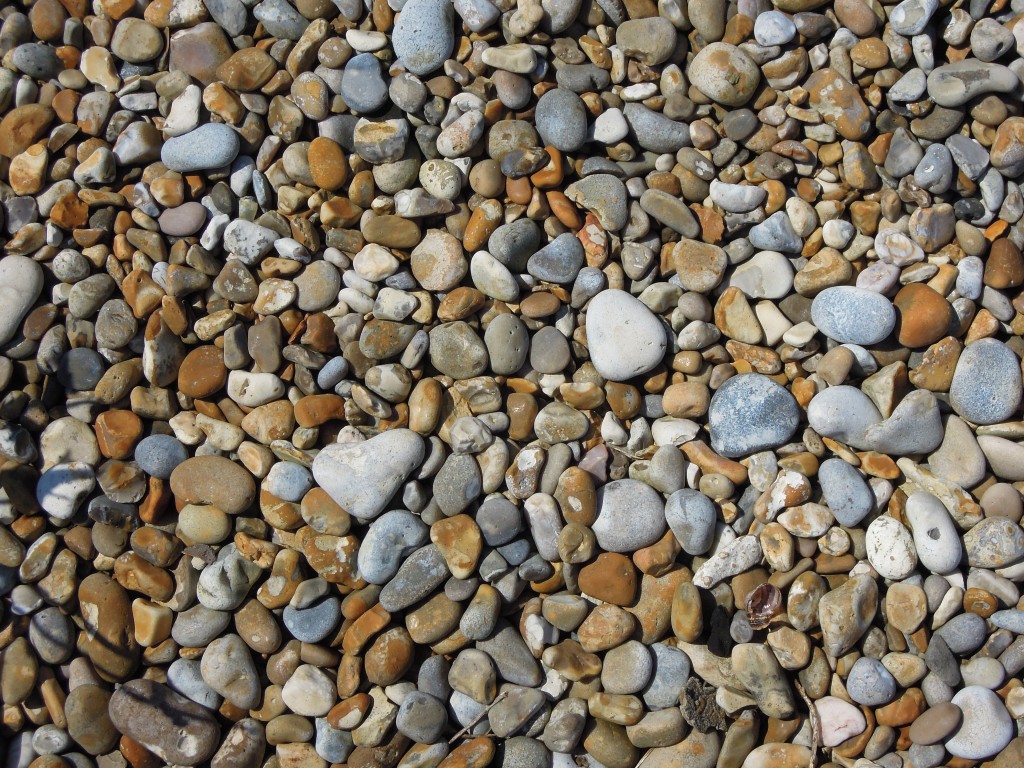
The gravel / shingle is made up almost entirely of flint. This remarkable material comes from the Cretaceous chalk layers that dominate the geology of southern England. Flint is extremely durable, so most post-Cretaceous sediments are dominated by flint as well. The pebbles in the Ness may have been eroded and transported and deposited multiple times since they grew in the chalk. In Southwold I’ve also seen brick and tile fragments on the beach, a reminder that buildings are also swallowed by the sea. These flint pebbles may once have been part of a mediaeval church in now vanished Dunwich.
Orford Ness is now owned by the National Trust and is a national nature reserve containing 15% of the world’s coastal vegetated shingle. But its evident from the picture above that something else has been going on – you’ll note the roads and the buildings. These date from the Cold War, when Orford Ness was part of Britain’s military preparations for world war three.
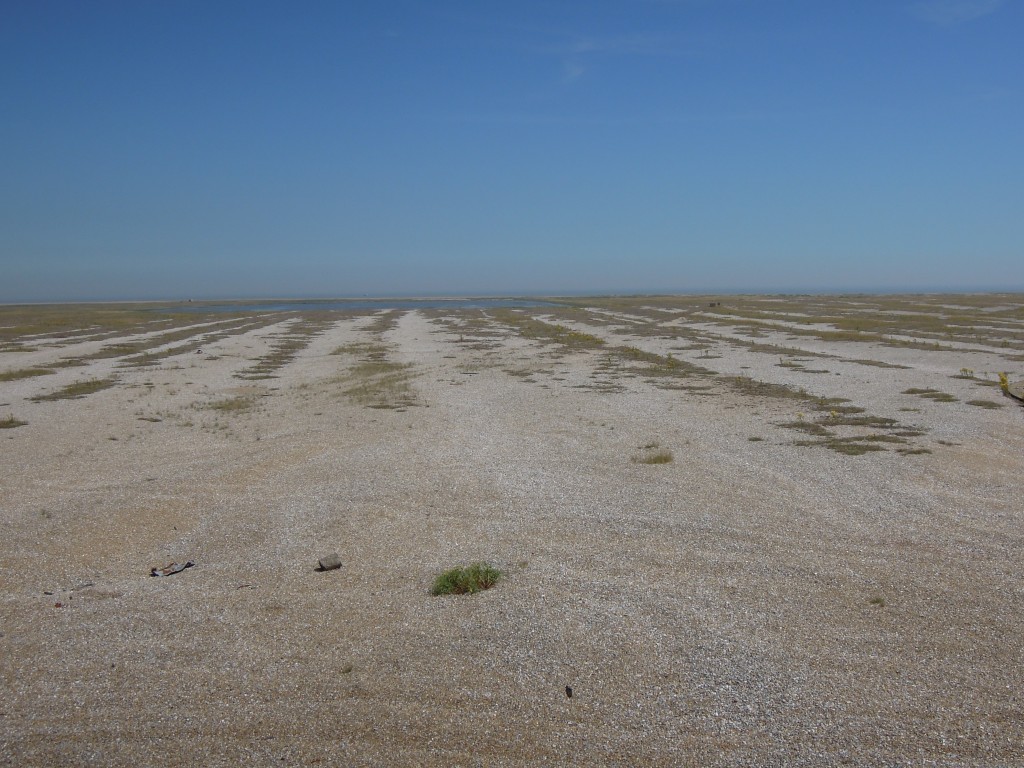
Orford Ness was used by the military before world war 2, mostly as a bombing range. In 1935 one of the first instances of using radar to detect aeroplanes took place here. In the 1960s the mostly American “Cobra Mist” program of over-the-horizon radar was based on the Ness. Once superceded by satellite technology in the 1970s, the same area was then used to broadcast the BBC World service radio station behind the Iron Curtain into eastern Europe.
The most dramatic traces of the Cold War relate to Britain’s nuclear weapons program. I feel I have some connection to this. My grandfather was a foreman on the building works at Calder Hall, Britain’s first nuclear power station, built soon after the end of the war. We have a picture that shows the Queen Mother meeting my grandfather, showing the importance attached to this work. Calder Hall, later Windscale, even later called Sellafield, was publicised as a source of cheap electricity, but initially its real purpose was to create Plutonium, to build bombs. These were then constructed at Aldermaston, near to where I now live.
Full testing of nuclear weapons is a messy business that the British government chose to do as far away as possible, in Australia. As well as exploding bombs, they tested what happens if a bomb is involved in a conventional explosion, say in a plane crash. Unsurprisingly this created “jets of molten, burning plutonium extending hundreds of feet into the air” and created a hell of a mess.
The testing in leafy England never involved radioactive material, but studied all other aspects of the bombs. Nuclear bombs (complete apart from the Plutonium) were dropped, banged, heated, frozen and subjected to various air pressures, all to understand how they would withstand the hurly-burly of a World War 3 battlefield. Nuclear weapons contain large amounts of high explosive, designed to compress the fissile material and initiate a runaway nuclear reaction. For this reason even these ‘cleaner’ tests were done somewhere isolated and within special buildings that would contain any explosions.
The Ness can only be reached by boat and crossed on specific paths and roads. Initially you start in an area of muddy marsh, rich in bird-life. The first glimpse of the shingle area is off-putting. In the foreground and behind you are bucolic English scenes. On the horizon are some odd structures, but how big are they? Its very hard to tell from a distance – this flat landscape gives little sense of scale.
As you get nearer things only get odder, its like another world. Those structures look like buildings, but they are surrounded by mounds of shingle, as if they are being pushed up from under the ground.
Up close they resolve into decaying buildings, with stained concrete and rust. They are surprisingly small. The banks of gravel are a pragmatic and cheap way of reinforcing the walls.
The oddest structures are the pagodas, which have a concrete roof topped with more gravel. In the event of a conventional explosion, the blast would be diverted sideways through the open vents.
Here’s a view from inside, showing the vents and giving a sense of the brutalist building style.
Testing on Orford Ness spanned only the 1950s until the 1970s, when Britain switched to a nuclear deterrent based on American technology, first Polaris and currently Trident. These buildings are now slowly decaying. Over time they will further merge with the shingle, or perhaps the restless sea will erode the Ness away, releasing the flint gravel within the concrete and sending it round yet another cycle of erosion and deposition on the English coast.
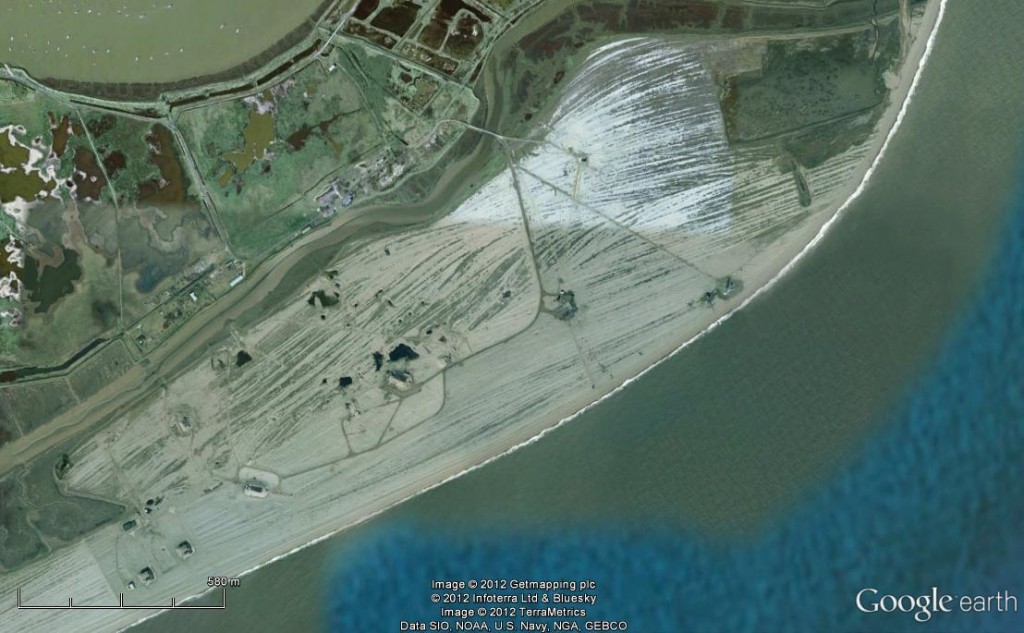
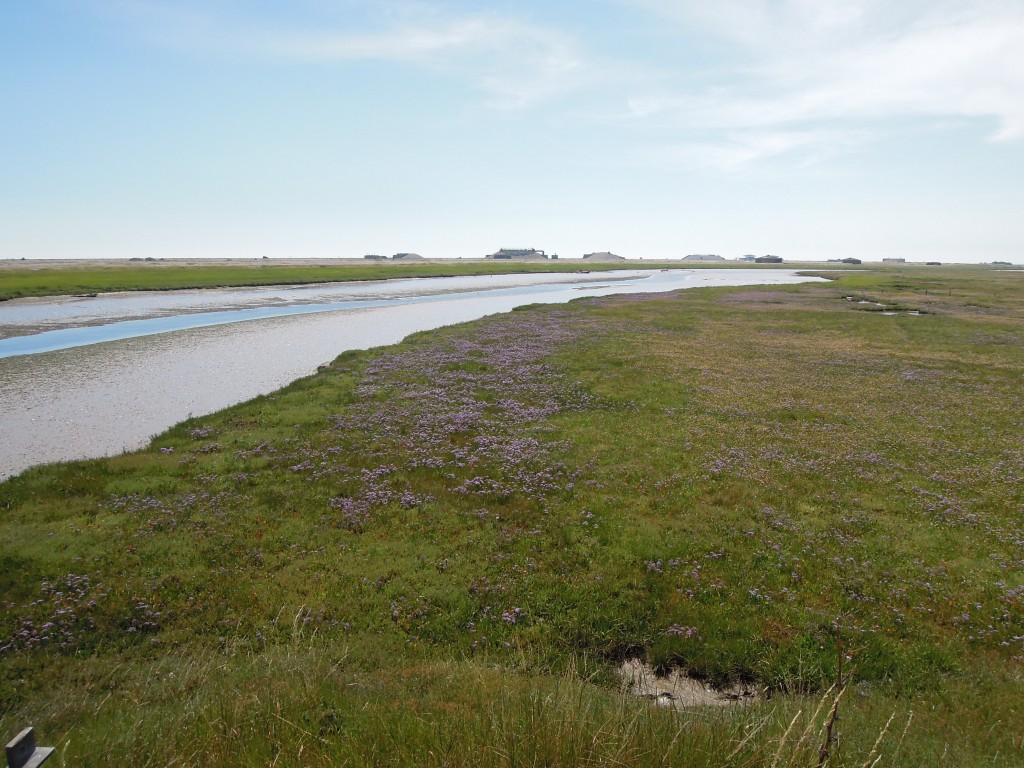
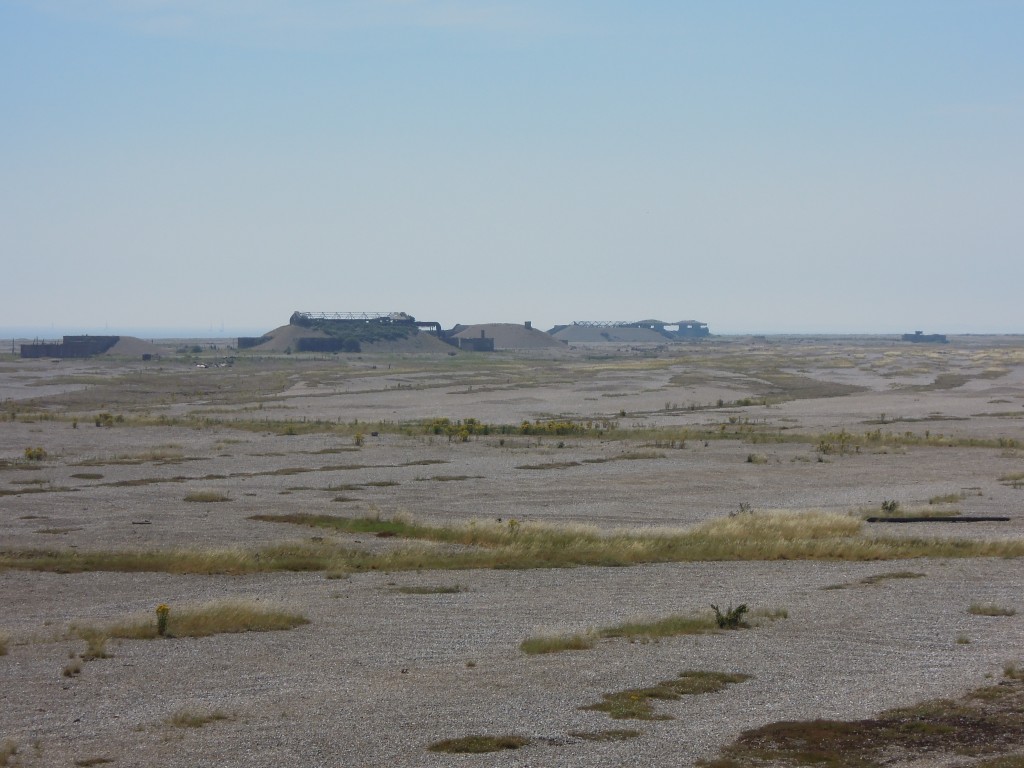
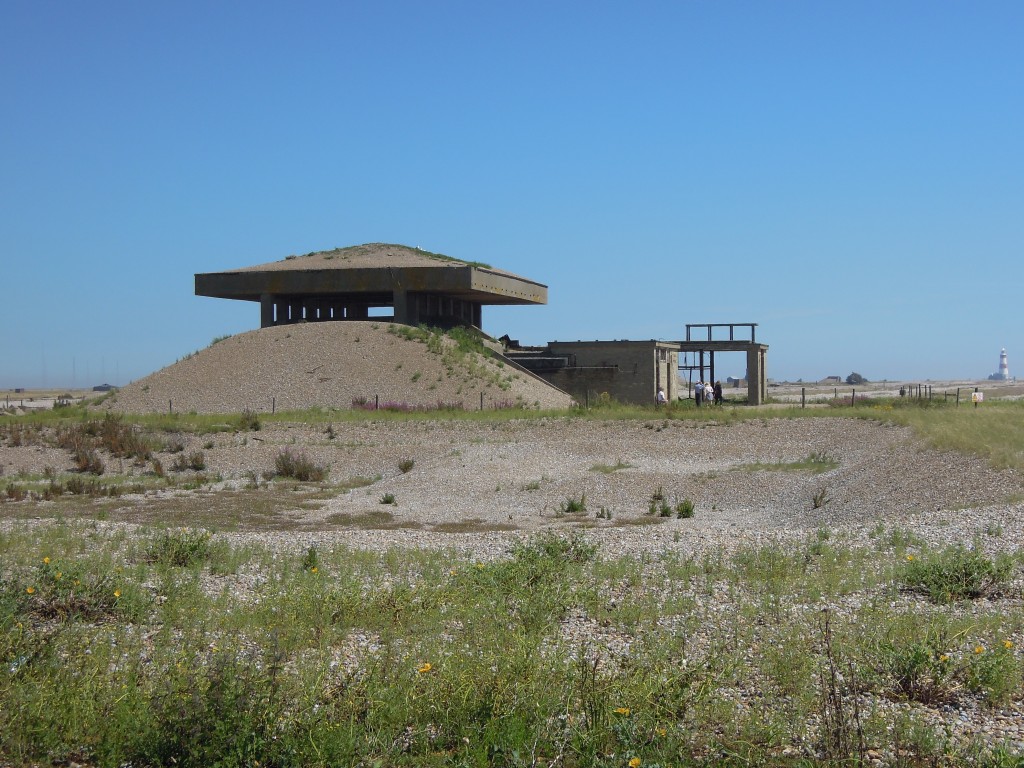

Hi
Orford Ness is indeed a strange and amazing place. I like your image of the pagodas growing out of the shingle. They do seem to shift and grow depending on the weather conditions and view point. If anyone is interested in visiting or finding out more about the site http://www.nationaltrust.org.uk/orfordness is the place to go.
David
National Trust
Fascinating, this Orford Ness. The way you’ve described it, sounds like either stepping back into the past or into the future. Interesting how the British and Americans manage to locate such remote places to work on. Has it shifted over the last half century?